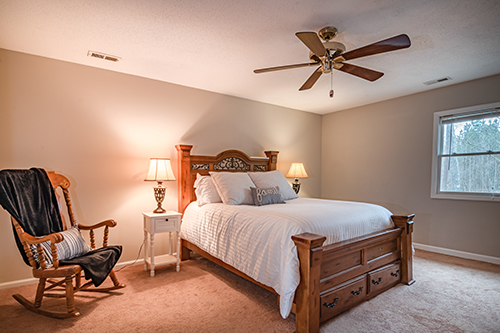7.17.20
Can you take a home office tax deduction?


Can you take a home office tax deduction?
The rules are different for the employed and self-employed. One question is on the mind of millions of American workers forced to work from home because of the pandemic: Can I take a home office deduction? Many people may not like the answer. The 2017 Tax Cut Act did away with the home office deduction for employees. Self-employed workers, however, can take a deduction for the portion of their home that is used exclusively and regularly for business. All tax savings are not lost for employees, though. The Stafford Act allows employers to provide tax-free assistance to employees during a disaster. Expenses that qualify include high-speed internet, computers, printers and office supplies. Check with your employer to see if they are taking advantage of the Stafford Act. The test for home office In order to qualify for a home office deduction, IRS guidelines state that your home must meet just one of these three requirements:
- it’s your main place of business
- it’s where you meet to conduct in-person business
- it’s a free-standing structure that you use in connection with your trade or business.
The rules are different for the employed and self-employed.
One question is on the mind of millions of American workers forced to work from home because of the pandemic: Can I take a home office deduction?
Many people may not like the answer. The 2017 Tax Cut Act did away with the home office deduction for employees. Self-employed workers, however, can take a deduction for the portion of their home that is used exclusively and regularly for business.
All tax savings are not lost for employees, though. The Stafford Act allows employers to provide tax-free assistance to employees during a disaster. Expenses that qualify include high-speed internet, computers, printers and office supplies. Check with your employer to see if they are taking advantage of the Stafford Act.
The test for home office
In order to qualify for a home office deduction, IRS guidelines state that your home must meet just one of these three requirements:
- it’s your main place of business
- it’s where you meet to conduct in-person business
- it’s a free-standing structure that you use in connection with your trade or business.
How much you can deduct
The IRS provides two ways to calculate a home office deduction: the simplified option and the regular method.
The simplified option is based on the square footage used for business and allows a standard $5 per square foot. You may claim up to 300 square feet for your home office. No depreciation is allowed with the simplified option.
The regular method to figure a home office deduction is based on the percentage of your home that’s devoted to business use. To figure the deduction this way, you need to track and keep records on actual expenses that may include mortgage interest, insurance, utilities, repairs and depreciation. You may also take a deduction for depreciation of your home.
You can choose either the simplified or regular method for any tax year. To learn more about simplified and regular home office deductions, read this article from the IRS.
As with all tax matters, consult with a knowledgeable accountant or attorney to see how IRS guidelines apply to your specific situation.
Do you have business banking questions? Contact our knowledgeable business development managers online or call 800-991-2221. We’re also available to help in person at your local office.
Federally insured by NCUA

Can you take a home office tax deduction?
The rules are different for the employed and self-employed. One question is on the mind of millions of American workers forced to work from home because of the pandemic: Can I take a home office deduction? Many people may not like the answer. The 2017 Tax Cut Act did away with the home office deduction for employees. Self-employed workers, however, can take a deduction for the portion of their home that is used exclusively and regularly for business. All tax savings are not lost for employees, though. The Stafford Act allows employers to provide tax-free assistance to employees during a disaster. Expenses that qualify include high-speed internet, computers, printers and office supplies. Check with your employer to see if they are taking advantage of the Stafford Act. The test for home office In order to qualify for a home office deduction, IRS guidelines state that your home must meet just one of these three requirements:
- it’s your main place of business
- it’s where you meet to conduct in-person business
- it’s a free-standing structure that you use in connection with your trade or business.












